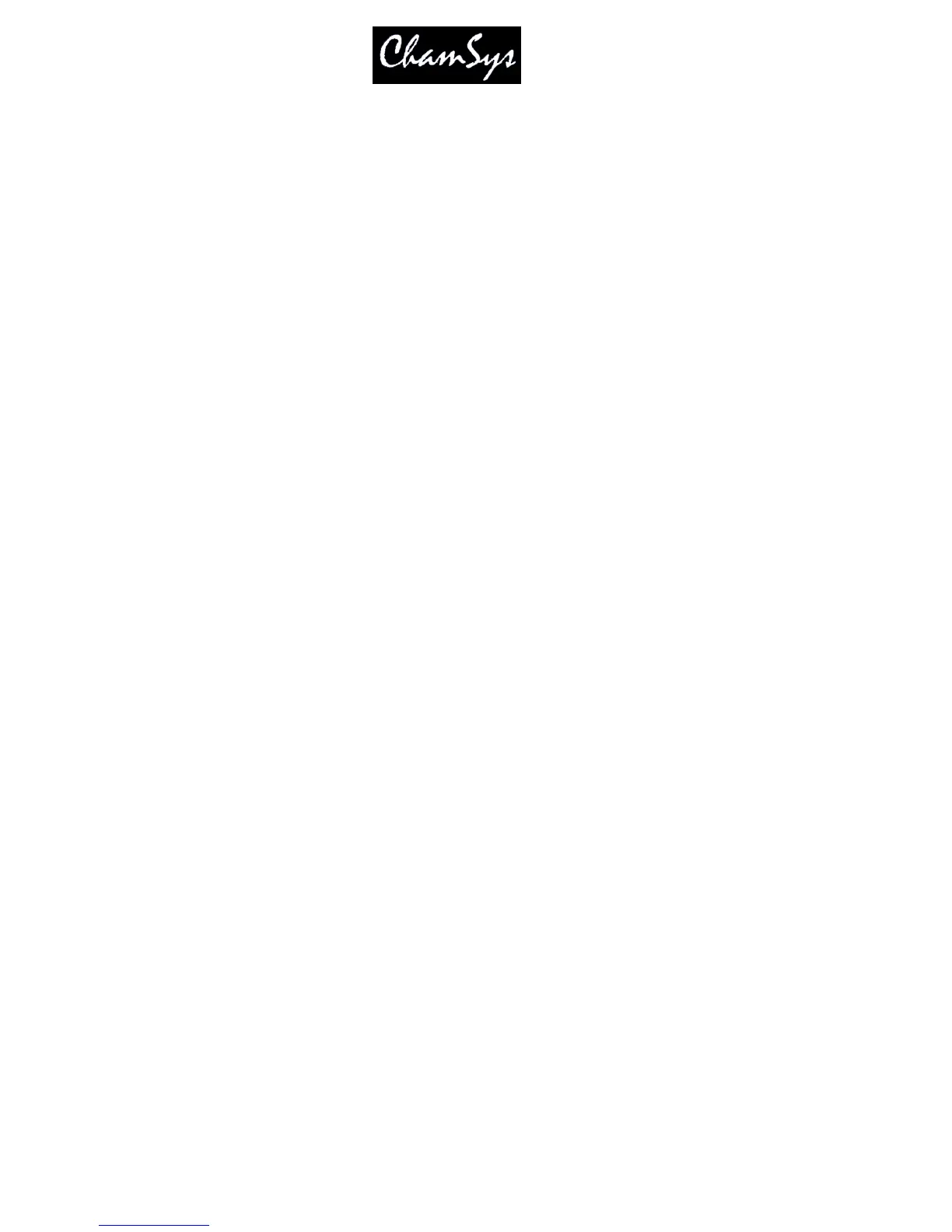ChamSys Ltd www.chamsys.co.uk
MagicQ User Manual 131 Version 1.4.9.0
When set to Yes lowering the fader to the activation threshold releases the Cue Stack. When set to No the
fader does Not release the Cue Stack.
The activation threshold defaults to 0. It is a global setting which is set in Setup, View Settings,
Hardware.
16.1.3 Fader controls HTP chans
When set to Yes the fader will control the level of all channels that are patched as HTP channels.
Typically this is only Intensity channels although sometimes it is useful to patch fixtures without Intensity
as HTP – e.g. the Red, Green, Blue channels of LED fixtures.
The fader controls the levels proportionately from 0% to 100% through the length of the fader.
If the Cue includes FX on HTP channels then the size of the FX is also reduced proportionately according
to the fader level.
When this setting is set to Yes then the other “Fader controls” settings should generally be set to No.
The overall intensity level of HTP channels is also affected by the Grand Master and the Sub Master and
any active Group Masters.
16.1.4 Fader controls LTP (IPCB) chans
When set to Yes the fader will control the value of all channels that are patched as LTP channels –
generally this is everything apart from Intensity.
When the fader is at 0% the LTP channels are not controlled by this Cue Stack. When the fader is raised
above 0% then MagicQ crossfades the LTP channels to the values stored in the Cue under control of the
fader. When the fader is at 100% then the LTP channels are exactly as stored in the Cue.
MagicQ crossfades the LTP channels from the values that they were at before the fader was raised above 0
– i.e. the current value of these channels. This will either be the values from other Cue Stacks, or if No
other Cue Stacks are controlling these channels the LTP or default values.
When set to Yes then the other “Fader controls” settings should generally be set to No.
16.1.5 Fader controls FX size
When this setting is set to Yes the fader controls the size of any FX that are running in the Cue Stack –
this includes FX from the current Cue and also any FX that are tracking from previous Cues in the Cue
Stack.
When the fader is at 100% then the FX is the size that was recorded in the Cue - lowering the fader
reduces the size until there is No size (No FX) at 0%.
Fader controls size affects FX on any attribute.
When set to Yes then the other “Fader controls” settings other than “Fader controls speed” settings should
generally be set to No.

